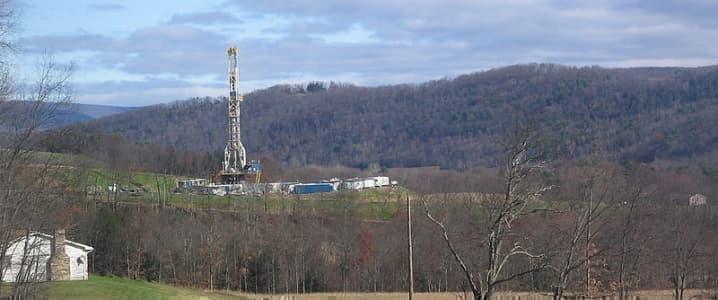Low Gas Prices Crush Appalachia Shale Boom
Authored by Nick Cunningham via OilPrice.com,
Low natural gas prices have finally brought the decade-long shale gas boom in Appalachia to a halt.
Gas production in Appalachia declined by about 1 billion cubic feet per day (Bcf/d) over the past 30 days, bringing output down to an average of 32.7 Bcf/d, according to S&P Global Platts Analytics. That helped drag down overall U.S. gas production to 91.8 Bcf/d, a 1.7 percent decline from 93.4 Bcf/d in November.
The Permian hogs a lot of attention in the press, but the Marcellus shale has been growing at a blistering rate for about a decade. That is now coming to an end as the shale gas industry struggles with oversupply and low prices, lack of profits, debt, investor skepticism and also competition from associated gas in the Permian.
Natural gas prices fell sharply last year, ending the year down more than 25 percent. The rig count in the Marcellus fell by 1 last week, dropping the total to 40. Eight months ago there were 65 rigs operating in the area.
Front-month gas contracts are trading at about $2.12/MMBtu, although at the wellhead prices can be much weaker. S&P said that prices at Dominion South, a hub in the Marcellus, have averaged just $1.78/MMBtu in the past month. S&P says that average breakeven prices are $1.80/MMBtu, but that likely understates the price level that drillers need, given the struggles that many have gone through.
“Gas prices are down. It has a big impact, the difference between $2.75 gas and $2.50 gas,” Toby Rice, EQT’s new president and CEO, told the West Virginian legislature in December “A lot of this development doesn’t work as well at $2.50 gas.”
An IEEFA analysis from last November found that seven of the largest producers in Appalachia spent nearly a half billion dollars more than they generated in the third quarter. With natural gas prices wallowing down close to $2/MMBtu, the cash burn rate may grow worse, unless the spending cuts continue.
Range Resources announced on January 6 that it would take an ax to its spending plans, cutting capex by 29 percent for 2020 compared to last year’s levels. The company also suspended its dividend, saving $20 million annually, so that it can allocate more money to paying off debt. Fortunately for Range, the company managed to hedge 60 percent of its output this year at an average price of $2.64/MMBtu.
Chevron recently announced a write down on the order of $11 billion for the fourth quarter, with its assets in Appalachia the principle cause.
The situation in the Appalachia is worse than for oil drillers in North Dakota, Colorado or Texas. To be sure, unconventional oil drilling is also riddled with financial problems and is based on a questionable business model. Oil wells still suffer from steep decline rates.
But the underlying commodity is faring better. That is, oil prices rose last year and gas prices declined. Moreover, while oil could just easily decline this year, it has better odds of an unexpected rally than gas does. In fact, the two commodities have been on “divergent paths,” as Reuters put it. The oil-to-gas price ratio recently hit 30:1, the highest ratio since 2013. Over the past five years, the ratio has averaged 19:1, but it really shot up in 2019 as oil and gas went in different directions.
There is little reason to think that they will converge this year. Speculators recently staked out bullish bets on oil (although that likely fell back after the U.S.-Iran de-escalation) and have increased bearish bets on gas.
“Speculative positioning in natural gas remains the most negative across the main metals, energy and agricultural futures market contracts,” Standard Chartered wrote in a note.
The other thing working against natural gas – and is a big problem for Appalachian gas drillers – is that associated gas production in the Permian is expected to continue to rise. Associate gas from the Permian now rivals that of the Marcellus, and crucially, output is not sensitive to price since it is not the primary objective of companies operating there.
It’s not clear if gas production in the Marcellus will continue to decline – analysts see it stabilizing – but at the very least, the drilling boom has come to an end.
Tyler Durden
Sat, 01/11/2020 – 12:30
via ZeroHedge News https://ift.tt/37Ut3MM Tyler Durden
